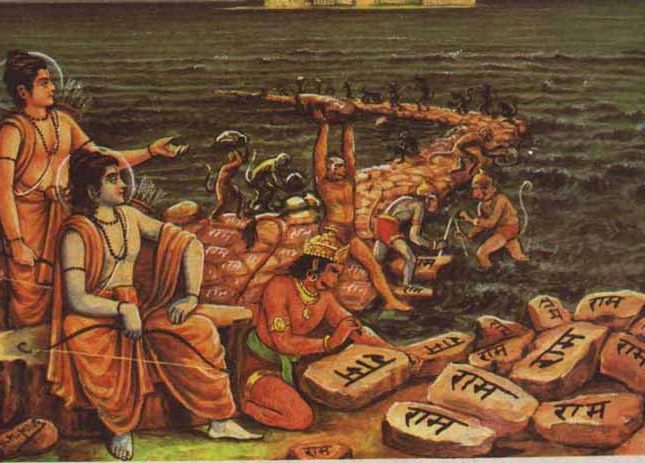TRETA YUGA In Treta, one-fourth of the merit of Dharma was lost, Dharma-Bull had only three feet and the fourth was replaced by duality. The enlightened person talked of Truth and the self-willed wasted himself in useless talk. (Maru M. l, p. 1023) In Treta one-fourth of the merit was lost. The hypocrisy spread and the Lord was considered far away. The enlightened person was conscious of it. The Name in the mind brought comfort. (Ramkali M. 3, p. 880) In Treta Yuga, the chariot is of celibacy and force is the charioteer.
(Var Asa, M. l, p. 470) Comments : In Treta Yuga, the Dharma-Bull stood only on three legs. One-fourth of his merit was lost. The malice grew up in the minds of the people. They became shrewd and began to act with motives. Still they were devoted to their duties and performed the rites and ceremonies punctually. See : Yugas.
References :
1. Kohli,Surindar Singh ed,Dictionary of Mythological References in Guru Granth Sahib 1993
Treta Yuga is the second of the four Yugas (ages) in Hindu cosmology, following the Satya Yuga and preceding the Dvapara Yuga. It is often referred to as the “Silver Age” and is characterized by a decline in virtue and righteousness compared to the Satya Yuga, though it still retains a significant level of moral and spiritual integrity.
Key Features of Treta Yuga:
Duration:
- Treta Yuga is said to last for 1,296,000 years in human terms, which is equivalent to 3,600 divine years. It is shorter than the Satya Yuga but longer than the Dvapara and Kali Yugas.
Moral Decline:
- During this age, Dharma (righteousness) stands on three legs, symbolizing a reduction in moral and ethical standards compared to the Satya Yuga, where Dharma stood on all four legs.
Significant Events:
- The Ramayana, one of the two great Indian epics, is set in the Treta Yuga. It narrates the life and deeds of Lord Rama, the seventh avatar of Vishnu, who exemplifies the ideals of Dharma and righteousness.
- Other avatars of Vishnu, such as Vamana (the dwarf) and Parashurama (the warrior with an axe), also appeared during this Yuga.
Human Characteristics:
- People in the Treta Yuga were less spiritually advanced than those in the Satya Yuga but still lived long lives and were devoted to performing yajnas (sacrificial rituals) to maintain cosmic balance.
Symbolism:
- The name “Treta” means “three,” signifying the triad of qualities or the three legs of Dharma that remain intact during this age. It also reflects the emergence of three key avatars of Vishnu during this period.
Treta Yuga represents a transitional phase in the cosmic cycle, where the balance between good and evil begins to shift, setting the stage for the events of the later Yugas.



